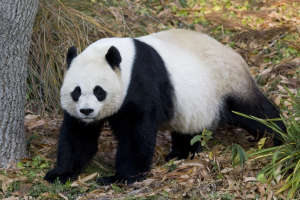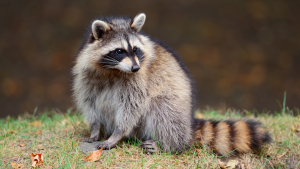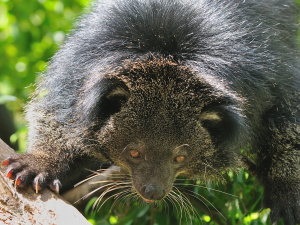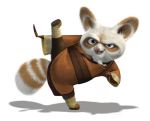As some of you who follow this blog know I have started this series to showcase that when we talk about wildlife in the Indian Subcontinent we are referring to a diversity beyond tiger, leopard, lion, elephant and the one horned rhino. I’ve had endless discussions with so many on this subject that I decided it might be more effective to showcase how cool each of these lesser sought after species are and why one should actually be traveling just to catch a glimpse of these marvelous creatures that are just as important to our eco-system as the tiger. Today I would like to showcase a real cutie-pie – The Red Panda.

Parti-Coloured Bear (Giant Panda)
I think for most people when you say panda literally everyone thinks of the Giant Panda, but did you know that the only true ‘Panda’ is the Red Panda. Confused? Well here goes the story:
The red panda was discovered in the 1820s; at the time it was just called the Panda. The name Panda has its origin in Nepal where it is known by many names – The Lepcha people call it sak nam, it is also called bhalu biralo (a bear-cat) and habre. The Sherpa people of Nepal and Sikkim call it ye niglva ponya and wah donka. In 1821, the English Naturalist Major General Thomas Hardwicke made a presentation on the creature at the Linnean Society in London. That is typically regarded as the moment the red panda became known in Western science. In his presentation, titled “Description of a new Genus of the Class Mammalia, from the Himalaya Chain of Hills Between Nepaul and the Snowy Mountains,” he argued that the animal be called a “wha,” explaining, “It is frequently discovered by its loud cry or call, resembling the word ‘Wha’, often repeating the same: hence is derived

Raccoon
one of the local names by which it is known. Unfortunately, Hardwicke’s paper wasn’t published until 1827, by which time the French zoologist Frédéric Cuvier had already published a description of the species along with a drawing. Naming rights, therefore, went to Cuvier. He named the species Panda derived most likely from its local name Ponya meaning a bamboo eating animal. But the giant panda is not the only species that red panda has given scientists taxonomic fits, they have also been compared extensively with raccoons because

Binturong
of its ringed tail and to Binturong (Bear-cats) that are found in similar habitat.
In the late 19th century, scientists noticed that the parti-coloured bear (that’s what giant panda was called initially as it had two colourations) and the red panda were very similar. Their jaws were more like each other than they were like any other animal, they lived near each other, they both had false thumbs, and their diets were similar. The decision was made to officially consider the (red) panda as a type of bear. By the early 20th century, that decision was reversed: Parti-coloured bears were declared bears, and (red) pandas were classified as cousins of the raccoon. Then, in the 1910s, it was decided that parti-coloured bears weren’t actually bears at all, but were actually large pandas, and also distant relatives of the raccoon. But because parti-coloured bears weren’t classed as bears anymore, they had to have a name change. They became giant pandas, while the one true panda was renamed the red or lesser panda. By the 1980s, genetic evidence indicated that giant pandas actually were a type of bear, and red pandas belonged in their own family, the Ailuridae. They might seem similar, but they’re not related.
Although they are different from Giant Pandas The red panda shares the giant panda’s rainy, high-altitude forest habitat, but has a wider range. Red pandas live in Eastern Himalayas – mountains of Nepal, eastern India, Bhutan and northern Myanmar, as well as in central China. They spend most of their lives in trees and even sleep aloft. When foraging, they are most active at night as well as in the gloaming hours of dusk and dawn.
4416473_xl Red Panda colette2Red pandas have a taste for bamboo but, unlike their larger relatives, they eat many other foods as well—fruit, acorns, roots, and sometimes eggs and insects. Talking about their diet they are often categorized as vegetarian carnivores. Confused again? ?
Don’t worry all of us do when we first hear it. Carnivore is a biological order that includes groups like bears, dogs, and cats, and while these animals are generally carnivores, some are omnivores, and some are vegetarians. Red pandas are classified as carnivores because they’re descended from the same ancestors as the other carnivores, but they rarely eat anything other than bamboo and a few insects. And while giant pandas eat all of the bamboo plant, red pandas eat only the young leaves. Because this is nutritionally poor food source, they need to spend 13 hours a day eating and looking for food and can lose upwards of 15 percent of their body weight in winter.
As for temperament and nature Red Pandas are shy and solitary except when mating. Females give birth in the spring and summer, typically to one to four young. Young red pandas remain in their nests for about 90 days, during which time their mother cares for them. Males take little or no interest in their offspring.
Although not sought after or as popular as the giant panda that today is the inspiration of World Wildlife Fund (WWF) as their logo and is the star of the movie series Kung-Fu panda, Red Panda too has been the inspiration of a brand that a lot of us use on a daily basis – any guesses?

Mozilla-Firefox-logo-1024x625It’s Mozilla’s flagship browser – Firefox. Yup, it’s not the red fox as most people think. Originally, Mozilla wanted to name the browser Fire-bird, but found that another open source project was using that name. Not wanting to upset anyone, they decided to go with Firefox, another name for the red panda. And in 2010 Mozilla adopted two baby red pandas that had been born at Tennessee’s Knoxville Zoo. In fact, in Chinese, “fire fox” is another name for the red panda.

Hey before I end this, for all you Kung Fu Panda fans, don’t be disappointed that ‘Po’ is not a real Panda…. the movie does have a real panda as well and it is none other than ‘Master Shifu’

I hope this inspires you enough to travel in search for the beautiful Red Panda.


